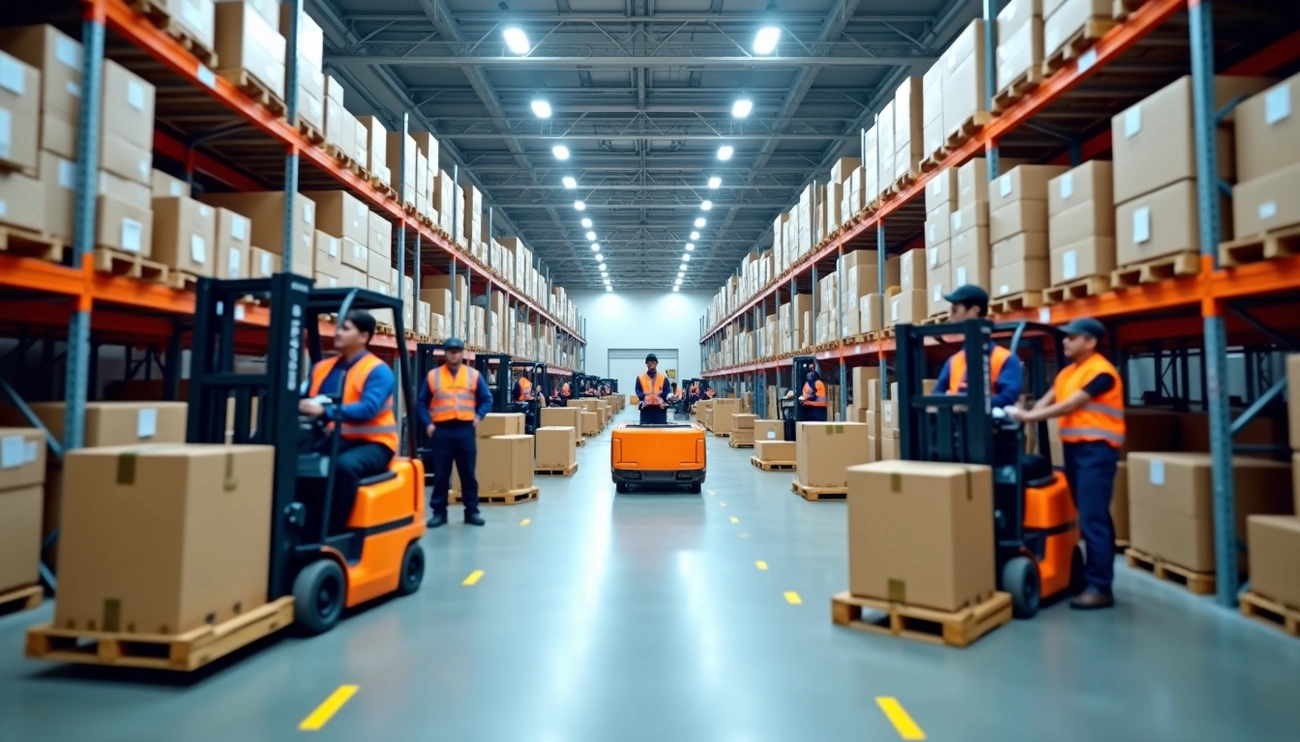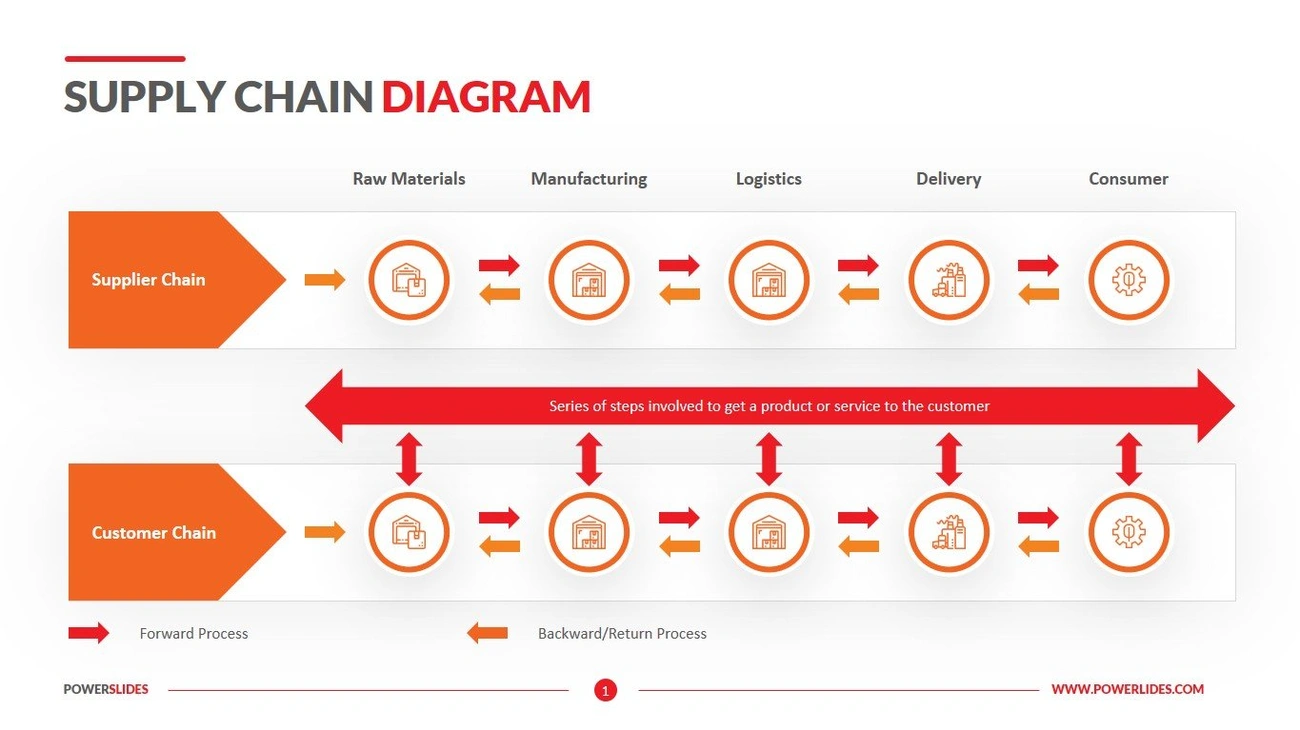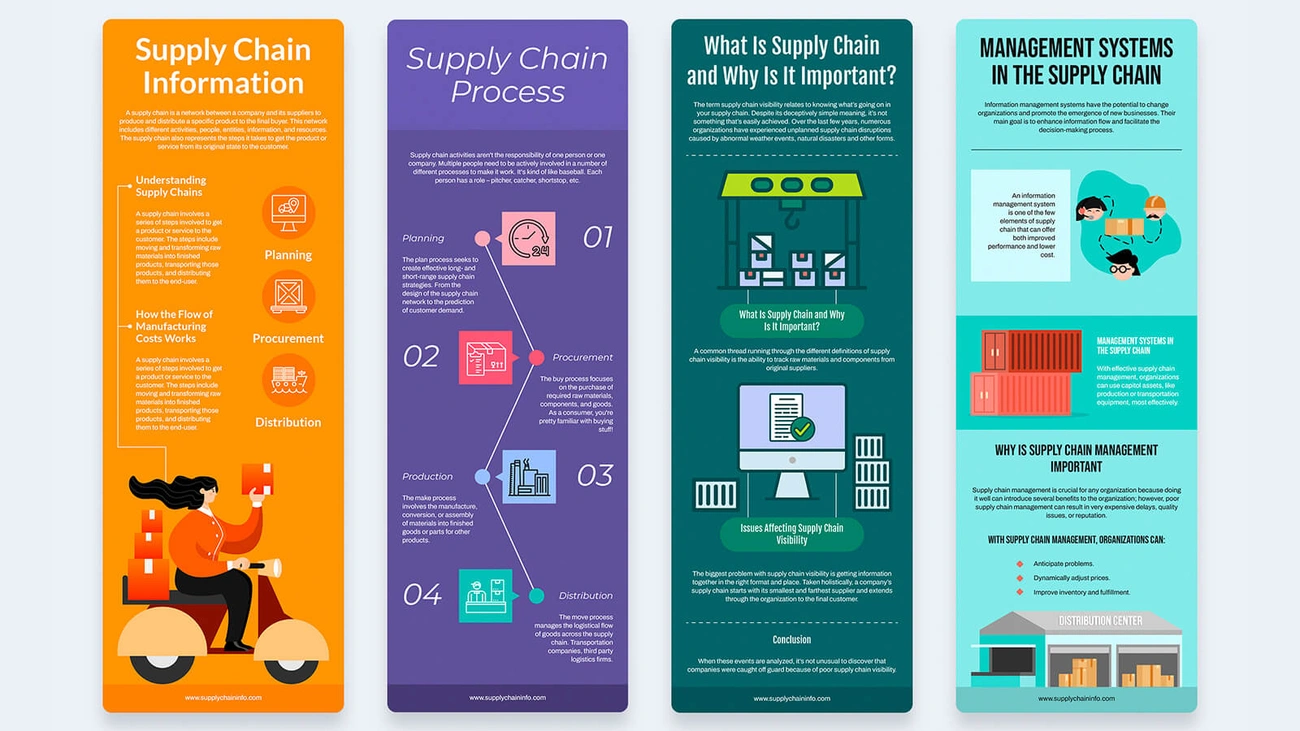
Your shipment's stuck at port. Raw materials are delayed somewhere between three suppliers across two continents. Meanwhile, your warehouse team is scrambling to fulfill orders with half the inventory they expected, and your customers are asking where their deliveries are.
Sound familiar?
You're not alone. The global logistics market hit USD 9,525.1 billion in 2021 and is projected to reach USD 13,326.3 billion by 2027—but that growth comes with complexity most businesses are still trying to master.
Here's the reality: logistics chain management isn't just moving boxes from point A to point B. It's an integrated network of processes that governs how raw materials and finished products flow from origin to final consumer. These functions work as interwoven elements, each one critical to keeping your operation running. Transportation alone eats up 60 to 70% of logistics costs, especially for low-priced, high-volume products.
The pandemic changed everything. What used to work doesn't anymore. Businesses now understand that effective logistics management isn't just operational overhead—it's the difference between thriving and watching competitors steal market share.
Here's what I'll show you: the essential functions that make logistics work and how they drive real business results. Whether you're dealing with supply chain chaos or looking to optimize what you've built, understanding these core components will help you create a logistics system that actually keeps up with your business needs.

Image Source: Powerslides
Logistics chain management coordinates the movement of goods and services from production to consumption. Think of it as the operational engine that makes your supply chain actually work—not just the strategy behind it, but the daily execution that gets products where they need to go.
Understanding this distinction helps you build systems that deliver value to customers while keeping costs under control.
The Council of Supply Chain Management Professionals (CSCMP) defines logistics as "that part of supply chain management that plans, implements, and controls the efficient, effective flow and storage of goods, services, and related information from the point of origin to the point of consumption".
At its core, logistics management executes the movement and positioning of inventory through activities including transportation, warehousing, and packaging. This operational component ensures products reach their destinations at the right time, in the right condition, and at the right cost.
Logistics breaks down into two key areas:
People use these terms interchangeably, but they're different. The scope tells the story:
Supply chain management provides the strategic framework within which logistics operates. While logistics concentrates on physical distribution and storage, supply chain management governs the entire product lifecycle from sourcing raw materials to final delivery.
Here's another way to think about it: supply chain management emphasizes collaboration among multiple organizations, whereas logistics typically concerns operations within a single company.
Effective logistics management directly impacts your bottom line. It reduces operational costs through optimized transportation routes, appropriate inventory levels, and efficient warehouse utilization. Well-managed logistics also enhances customer satisfaction by ensuring accurate and timely deliveries.
But there's more. Logistics provides greater visibility into your supply chain, allowing you to control expenses, identify problems quickly, and conduct effective demand planning. This visibility prevents inventory loss through accurate stock accounting and tracking.
Most importantly, properly coordinated logistics enables companies to respond swiftly to market changes and supply disruptions. That responsiveness? It creates competitive advantage.
Businesses that master logistics chain management achieve sustained growth while maintaining service excellence. It's not just important—it's essential for long-term success.

Image Source: Slidenest
Eight interconnected functions form the backbone of effective logistics operations. Each one handles a specific piece of the puzzle, but they work together to keep goods moving from origin to destination.
Order processing connects what customers want with what you actually have in stock. This function receives, verifies, and routes orders through ERP systems or e-commerce platforms. Get this wrong and everything downstream falls apart — delayed processing creates cascading delays that customers feel directly.
Balancing inventory means walking a tightrope between having too much (tying up capital) and too little (losing sales). Effective inventory control enables just-in-time operations while keeping carrying costs manageable. The stakes are real: Walmart once estimated losing INR 253.14 billion in sales due to stockouts caused by inadequate inventory control.
Smart warehouse organization means products move efficiently from receiving to shipping. Layout design directly affects labor costs, inventory turnover, and how fast you can fulfill orders. Space utilization isn't just about fitting more stuff in — it's about creating flow that reduces handling time and errors.
Transportation eats up 60-70% of total logistics costs, particularly for low-priced, high-volume products. Route optimization software can dramatically cut fuel expenses and delivery windows. The math is simple: better routes mean lower costs and happier customers.
Moving products safely within facilities requires the right equipment and processes. The U.S. Bureau of Labor Statistics reports the warehousing industry averaged 4.8 injuries per 100 workers in 2020. Proper material handling protects both people and products while maintaining operational speed.
Packaging does more than contain products — it protects goods during transit while meeting regulatory requirements. The best packaging strategies balance product protection with space efficiency and sustainability concerns.
Discover our Lasya AI for automating your logistics functions through GPS, RFID, and barcode technologies that deliver real-time supply chain visibility. Today's customers expect transparency, and tracking systems provide the responsiveness modern business demands.
The last mile from warehouse to customer encompasses order fulfillment, packing, shipping, and final delivery. This final segment costs the most but has the greatest impact on customer satisfaction. Master last-mile delivery and you own the customer experience.
Business results speak louder than logistics theory. When these functions work together, they create measurable competitive advantages that show up on your bottom line and in your customer retention numbers.
Transportation and inventory management offer the biggest opportunities for expense reduction. Companies that optimize routes, consolidate shipments, and maintain appropriate stock levels see significant overhead reduction. Since transportation typically consumes 60-70% of total logistics costs, route optimization becomes critical for profit margins.
The numbers are compelling: 83% of companies implementing streamlined logistics report measurable cost savings. These reductions show up in fuel consumption, labor utilization, and storage requirements—areas that directly impact your operational budget.
Delivery performance drives customer loyalty more than most businesses realize. Research shows 73% of customers globally consider their experience a critical purchasing factor. Nearly one-third will abandon a brand after just one poor experience.
Real-time tracking capabilities and flexible delivery options provide the transparency customers expect throughout fulfillment. Accurate, timely deliveries build trust and encourage repeat business—turning logistics performance into a customer retention tool.
Visibility transforms reactive operations into strategic advantages. Centralized data analytics provide comprehensive insights into inventory levels, shipment status, and production schedules. This transparency shifts decision-making from reactive problem-solving to proactive optimization.
Companies with supply chain visibility identify bottlenecks before they become customer issues. They optimize operations based on real data and mitigate risks before they affect delivery performance.
Well-managed logistics creates the foundation for expansion. The infrastructure supports entry into new markets and broader customer reach. Modern logistics systems adapt quickly to fluctuating demand, seasonal trends, and unexpected disruptions.
Digital logistics platforms scale with business needs, accommodating increased order volumes without major operational overhauls. This scalability means your logistics capabilities grow with your business rather than constraining it.
Most companies treat logistics as a necessary cost center. Smart ones turn it into competitive advantage.
When logistics functions align with broader supply chain strategy, the results speak for themselves: operational excellence that competitors can't match. The difference lies in treating logistics as strategic infrastructure rather than just moving parts.
Your logistics operations should directly serve your business objectives, not work against them. Companies that get this alignment right report cost reductions of up to 25% in overall operations.
Take Hindustan Unilever. They work with suppliers and logistics partners to align every supply chain process with sustainability and cost efficiency goals. The result? Operations that support both profit margins and brand values.
Here's what matters: your supply chain strategy should define how you'll differentiate from competitors while setting specific, measurable targets. Without this clarity, logistics becomes reactive problem-solving instead of strategic advantage.
Manual processes don't scale. Period.
Discover our Lasya AI for automating your logistics functions through integrated platforms that connect departments and provide real-time visibility. The numbers back this up: logistics management systems reduce inventory costs by 20-30% and transportation spending by 10%.
Cloud-based infrastructure gives you access to critical data anywhere, anytime. This isn't just about convenience—it's about agility and collaboration across teams. When your logistics data flows seamlessly between departments, decisions get made faster and more accurately.
Logistics managers aren't just moving goods—they're connecting departments. They coordinate with project managers, transportation managers, operations managers, and senior leadership daily.
Cross-functional collaboration breaks down the silos that kill efficiency. Real-time information flows across the supply chain when departments actually communicate. The payoff? Teams work together to ensure timely, accurate deliveries, building customer loyalty that drives repeat business.
The logistics manager becomes the operational bridge between strategy and execution. Without this coordination, even the best logistics functions operate in isolation.
The numbers don't lie. The logistics market's projected jump from USD 9,525.1 billion in 2021 to USD 13,326.3 billion by 2027 reflects a fundamental shift in how businesses compete. What used to be a back-office function now determines who wins and who gets left behind.
Here's what matters: those eight core logistics functions aren't just operational boxes to check. Order processing, inventory control, warehousing, transportation, material handling, packaging, tracking, and outbound logistics form an integrated system that either works together or falls apart together. Companies that treat them as isolated processes miss the point entirely.
The businesses getting this right see real results. Cost reductions through smarter transportation and inventory management translate directly to better margins. Customers stick around when deliveries arrive on time with full visibility throughout the process. Most importantly, supply chain visibility moves you from reactive firefighting to proactive problem-solving.
But here's where it gets interesting: logistics becomes a strategic weapon when it aligns with your broader business goals. Data-driven decision-making through specialized software transforms what was once a cost center into a competitive advantage. Cross-functional coordination breaks down the silos that kill efficiency and slow response times.
Discover our Lasya AI for automating your logistics functions and see how the right technology can amplify these benefits across your entire operation.
The reality is this: markets are more connected and more volatile than ever. Supply disruptions happen. Customer expectations keep rising. The businesses that master logistics management—not just manage it, but master it—position themselves to grow while their competitors struggle to keep up.
Whether you're fixing what's broken or building something new, these logistics functions will determine how well your business performs in the years ahead. The choice isn't whether to optimize your logistics system. The choice is whether to do it now or watch your competitors do it first.
Understanding and optimizing logistics chain management is crucial for business success, as the global logistics market is projected to reach USD 13,326.3 billion by 2027.
• Master the 8 core functions: Order processing, inventory control, warehousing, transportation, material handling, packaging, tracking, and outbound logistics work as an integrated system to drive efficiency.
• Focus on cost optimization: Transportation consumes 60-70% of logistics costs, making route optimization and inventory management critical for improving profit margins by up to 25%.
• Prioritize customer satisfaction: 73% of customers consider experience important for purchasing decisions, making timely delivery and real-time tracking essential for retention and loyalty.
• Leverage data-driven decisions: Implementing logistics management systems can reduce inventory costs by 20-30% and transportation spending by 10% through better visibility and coordination.
• Align logistics with strategy: Transform logistics from a cost center to a strategic asset by integrating functions with broader supply chain goals and fostering cross-functional collaboration.
Effective logistics management isn't just about moving goods—it's about creating competitive advantage through optimized processes, enhanced customer experience, and scalable systems that support business growth in today's interconnected marketplace.
Q1. What are the core functions of logistics chain management? Logistics chain management comprises eight key functions: order processing, inventory control, warehousing, transportation, material handling, packaging, monitoring and tracking, and outbound logistics. These functions work together to ensure efficient movement of goods from origin to destination.
Q2. How does effective logistics management impact business success? Effective logistics management drives business success by reducing operational costs, improving customer satisfaction through timely deliveries, enhancing supply chain visibility, and supporting scalability. It can lead to significant cost savings, increased customer loyalty, and better responsiveness to market changes.
Q3. What is the difference between logistics and supply chain management? While logistics focuses specifically on the movement, storage, and flow of goods within and across organizations, supply chain management encompasses a broader system including procurement, operations, marketing channels, and all logistics activities. Logistics is essentially a component of the overall supply chain management strategy.
Q4. How can businesses optimize their logistics costs? Businesses can optimize logistics costs through various strategies such as route optimization, inventory level optimization, efficient warehouse utilization, and implementing advanced tracking systems. Utilizing logistics software for data-driven decisions and aligning logistics activities with overall supply chain goals can also lead to significant cost reductions.
Q5. Why is cross-functional coordination important in logistics management? Cross-functional coordination in logistics management is crucial as it breaks down organizational silos, improves communication between departments, and ensures real-time information flow across the supply chain. This coordination enhances service delivery, boosts customer loyalty, and allows for more efficient problem-solving and decision-making processes.
Transform your business with Lasya AI —optimize, automate, and scale smarter today!
